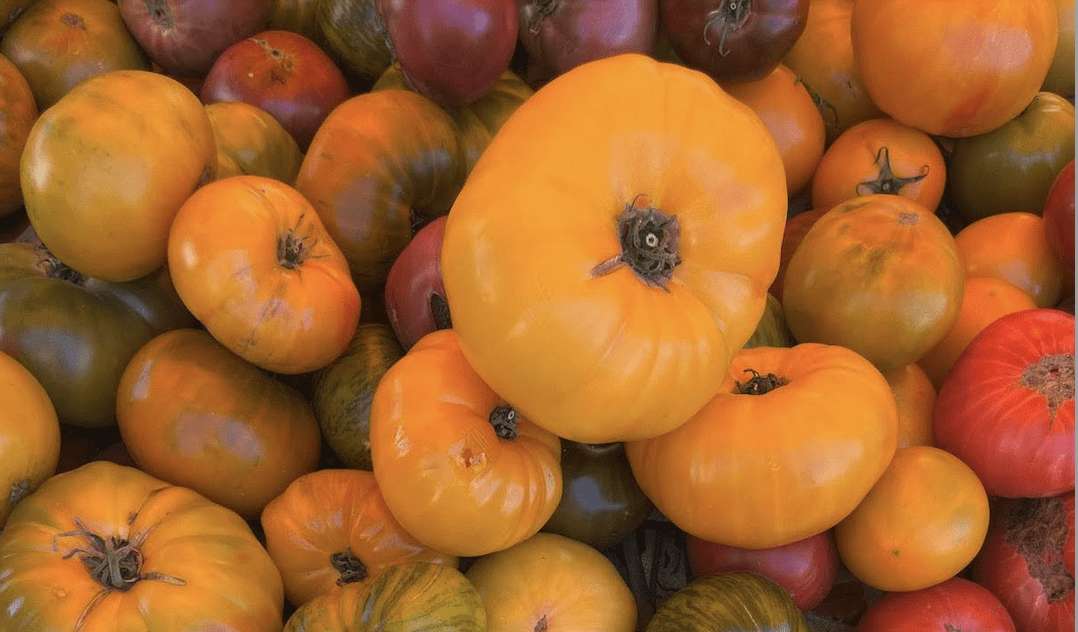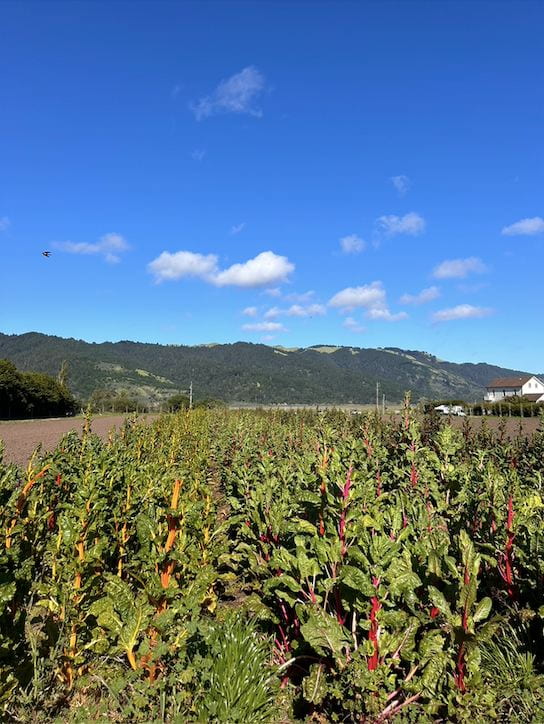What’s your favorite thing about summer? Mine is tomatoes.
In preparation for the approach of summer, and all of the wonderful things that come with this special season, I wanted to take an opportunity to appreciate my favorite thing about this time of year: the summer tomato. Every year, the California sun warms these little red fruits and coaxes their vine-ripening to create tomatoes that transcend what is expected of them in any other season. Maybe I’m being a bit dramatic or overly poetic about my appreciation of tomatoes, but I just love them that much. Ever since I was a little I’ve loved picking vibrant, summer-grown, cherry tomatoes off their vines and popping them right into my mouth–without even washing them! Don’t tell anyone, but I think the thin layer of dust adds to their organic appeal. My goal with this blog post is to get you excited about summer tomatoes and to share some tips that will help you to enjoy them in a sustainable way!
Why are tomatoes considered a summer fruit after all? Beyond their aesthetics (because the bright red of their pigment is a cohesive look with the bright red of my summer sunburn), tomatoes thrive in warm weather. The plant originated in Peru and was brought to Europe where it was embraced in warm, Mediterranean climates. But the tomato has made a long journey since the pre-colonial era and due to the scope of this blog post, I’m going to jump to the period of industrial farming hegemony in the United States.
Industrial agriculture has made tomatoes available in your grocery store no matter the season, but these tomatoes hardly compare to their homegrown, heirloom, summer-harvested relatives. Centuries of breeding of tomatoes have left our modern supermarket tomato without dozens of natural chemical compounds that impact complex flavors and smells (Handwerk 2017). Industry has also encouraged the production and harvesting of larger tomatoes, which can be sold for more and picked for the same price as smaller tomatoes. A 2008 study showed that as tomatoes grew larger (as much as 1,000-fold) they have become less sweet (Cong, Barrero, & Tanksley 2008). So, basically those giant beefsteak tomatoes that are somehow available in February at your local Safeway represent generations of genetic evolution and are almost an entirely different fruit.

Hopefully, this explains why I’m a bit of a snob about my tomatoes and when I’m eating them. Tomatoes in the winter or early spring just don’t typically inspire my taste buds and, to me, often represent an uncomfortable strain on resources to get a genetically-modified, not in-season food to my table. Of course, it’s a privilege to choose the seasons when I buy my produce and from where. Additionally, farming, to a certain extent, must serve the interests of the collective and meet the food needs of everyone. I’m definitely not going to argue with that. But I also do want to encourage everyone to treat themselves to the magic of a homegrown or organic tomato this summer.
Your local farmers are probably growing and harvesting with the seasons, instead of against them, and it’s important to support them. Visiting a farmers market near you is the best way to do that. This summer you’ll find tomatoes of every shape, size, and color being offered at the markets. However, if you are in the Bay Area, keep in mind that tomato season has been delayed in the past few years due to colder, longer springs. But never fear, you can still find tomatoes, just maybe a few weeks later!
If you do find yourself gathering tomatoes from a market, then I recommend blistering cherry tomatoes and serving them over toasted baguettes and fresh ricotta. Heirloom tomatoes are also great in the summer! And the cool thing about them is that basically no two heirloom tomatoes will look or taste the same, and you’ll have a new experience every time. My favorite taste combination in the whole world is a freshly salted and peppered heirloom tomato slice with burrata and a drizzle of olive oil. Wow. Unreal!
So, please, do yourself a favor and visit a farmers market this summer to grab a tomato or two! Also, it’s never a bad idea to educate yourself on your favorite foods, where your food comes from, and the people who shape our food systems. Through this, we will never stop learning, and our worldviews will continue to be impacted by cooking and eating.
Works Cited
Cong, B., Barrero, L. & Tanksley, S. Regulatory change in YABBY-like transcription factor led to evolution of extreme fruit size during tomato domestication. Nat Genet 40, 800–804 (2008). https://doi.org/10.1038/ng.144
Smith, Kiona N. “Geneticist’s Quest to Return Tomatoes to Their Full-Flavored Glory.” *Smithsonian Magazine*, 15 Mar. 2017, https://www.smithsonianmag.com/science-nature/geneticists-quest-return-tomatoes-full-flavored-glory/.


